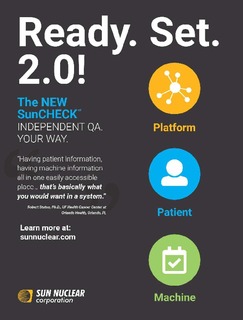| dc.contributor.author | Tran, Linh T. | |
| dc.contributor.author | Bolst, David | |
| dc.contributor.author | Guatelli, S. | |
| dc.contributor.author | Pogossov, A. | |
| dc.contributor.author | Petasecca, Marco | |
| dc.contributor.author | Lerch, Michael L.F. | |
| dc.contributor.author | Chartier, Lachlan | |
| dc.contributor.author | Prokopovich, Dale A. | |
| dc.contributor.author | Reinhard, Mark I. | |
| dc.contributor.author | Povoli, Marco | |
| dc.contributor.author | Kok, Angela | |
| dc.contributor.author | Perevertaylo, Vladimir I. | |
| dc.contributor.author | Matsufuji, Naruhiro | |
| dc.contributor.author | Kanai, T | |
| dc.contributor.author | Jackson, Michael | |
| dc.contributor.author | Rosenfeld, Anatoly B. | |
| dc.date.accessioned | 2018-06-08T08:47:20Z | |
| dc.date.available | 2018-06-08T08:47:20Z | |
| dc.date.created | 2018-02-13T16:08:00Z | |
| dc.date.issued | 2018 | |
| dc.identifier.citation | Medical physics (Lancaster), 2018, 45 (5), 2299-2308 | nb_NO |
| dc.identifier.issn | 0971-6203 | |
| dc.identifier.uri | http://hdl.handle.net/11250/2500989 | |
| dc.description.abstract | Background: The aim of this study was to measure the microdosimetric distributions of a carbon pencil-beam scanning (PBS) and passive scattering system as well as to evaluate the relative biological effectiveness (RBE) of different ions, namely 12C, 14N and 16O, using a silicon-on-insulator (SOI) microdosimeter with well-defined 3D sensitive volumes (SV). Geant4 simulations were performed with the same experimental setup and results were compared to the experimental results for benchmarking. Method: Two different silicon microdosimeters with rectangular parallelepiped and cylindrical shaped SVs, both 10 µm in thickness were used in this study. The microdosimeters were connected to low noise electronics which allowed for the detection of lineal energies as low as 0.15 keV/μm in tissue. The silicon microdosimeters provide extremely high spatial resolution and can be used for in-field and out-of-field measurements in both passive scattering and PBS deliveries. The response of the microdosimeters was studied in 290 MeV/u 12C, 180 MeV/u 14N, 400 MeV/u 16O passive ion beams, and 290 MeV/u 12C scanning carbon therapy beam at Heavy Ion Medical Accelerator in Chiba and Gunma University Heavy Ion Medical Center, Japan, respectively. The microdosimeters were placed at various depths in a water phantom along the central axis of the ion beam, and at the distal part of the Spread Out Bragg Peak (SOBP) in 0.5 mm increments. The RBE values of the pristine Bragg peak (BP) and SOBP were derived using the microdosimetric lineal energy spectra and the modified microdosimetric kinetic model (MKM), using MKM input parameters corresponding to human salivary gland (HSG) tumour cells. Geant4 simulations were performed in order to verify the calculated depth-dose distribution from the treatment planning system and to compare the simulated dose-mean lineal energy to the experimental results. Results: For a 180 MeV/u 14N pristine BP, the dose-mean lineal energy (yD) ̅obtained with two types of silicon microdosimeters started from approximately 29 keV/µm at the entrance to 92 keV/µm at the BP, with a maximum value in the range of 412 to 438 keV/µm at the distal edge. For 400 MeV/u 16O ions, the dose-mean lineal energy (yD) ̅started from about 24 keV/µm at the entrance to 106 keV/µm at the BP, with a maximum value of approximately 381 keV/µm at the distal edge. The maximum derived RBE10 values for 14N and 16O ions were found to be 3.10 ± 0.47 and 2.93 ± 0.45, respectively. Silicon microdosimetry measurements using pencil beam scanning 12C ions were also compared to the passive scattering beam. Conclusions: These SOI microdosimeters with well-defined 3D SVs have applicability in characterising heavy ion radiation fields and measuring lineal energy deposition with sub-millimetre spatial resolution. It has been shown that the dose-mean lineal energy increased significantly at the distal part of the BP and SOBP due to very high LET particles. Good agreement was observed for the experimental and simulation results obtained with silicon microdosimeters in 14N and 16O ion beams, confirming the potential application of SOI microdosimeter with 3DSV for quality assurance in charged particle therapy. | nb_NO |
| dc.language.iso | eng | nb_NO |
| dc.subject | Dosimetri | nb_NO |
| dc.subject | Dosimetry | nb_NO |
| dc.title | The relative biological effectiveness for carbon, nitrogen and oxygen ion beams using passive and scanning techniques evaluated with fully 3D silicon microdosimeters | nb_NO |
| dc.type | Journal article | nb_NO |
| dc.type | Peer reviewed | nb_NO |
| dc.description.version | publishedVersion | nb_NO |
| dc.subject.nsi | VDP::Nanoteknologi: 630 | nb_NO |
| dc.subject.nsi | VDP::Nanotechnology: 630 | nb_NO |
| dc.source.pagenumber | 2299-2308 | nb_NO |
| dc.source.volume | 45 | nb_NO |
| dc.source.journal | Medical physics (Lancaster) | nb_NO |
| dc.source.issue | 5 | nb_NO |
| dc.identifier.cristin | 1564875 | |
| dc.relation.project | Norges forskningsråd: 219991 | nb_NO |
| cristin.unitcode | 7401,90,31,0 | |
| cristin.unitname | Mikrosystemer og nanoteknologi | |
| cristin.ispublished | false | |
| cristin.fulltext | Published Version | |
| cristin.qualitycode | 1 | |
